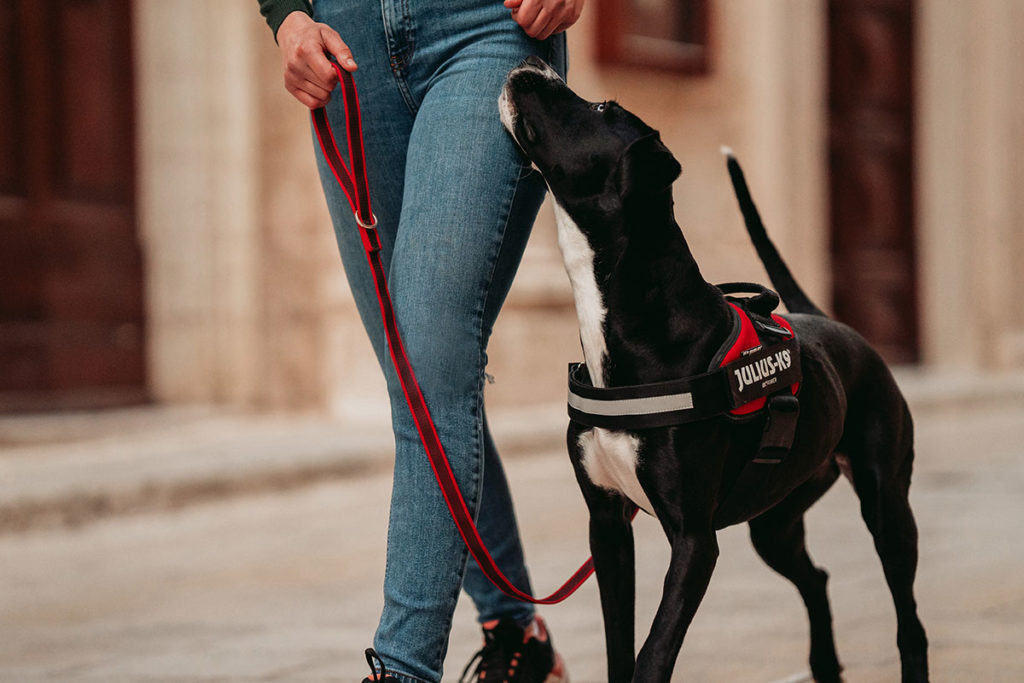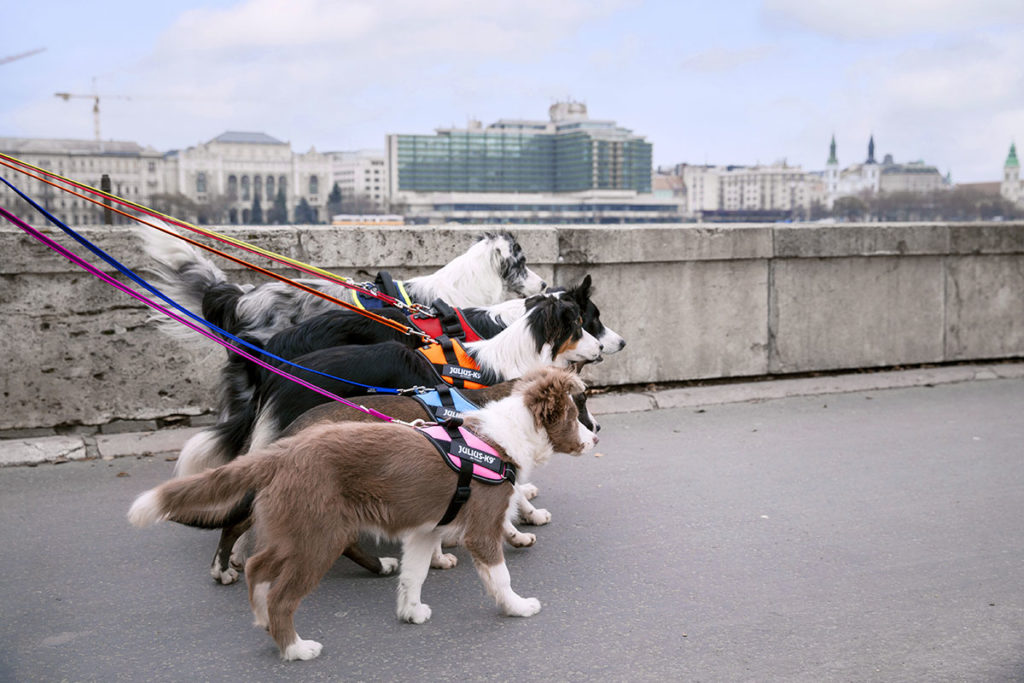Countless new brands have been founded between 2015 and 2023 in the field of dog equipment. Such a boom should result in a wider offer, from which in theory the dog owners should be able to choose the one that is most appropriate for their needs with more certainty. Nevertheless, the average consumer wanting to buy dog equipment in the crosshairs of marketing campaigns is in a more difficult position nowadays, than they were 10 years ago. As the dog harness has become one of the leading equipment of modern-day dog ownership, the information chaos is the biggest in its field. The grounds for the everyday use of dog harnesses to the detriment of collars, have been established by animal rights activists around the Millenium.
“A dog harness is a piece of equipment consisting in part of straps that surround the dog’s torso. It is used to guide, hold, and lift the dog or to utilise its pulling power. It reduces tension on the neck when they pull, and provides free breathing during daily walks.” (Wikipedia)
There is no scientific material regarding the dog harnesses’ design, weight or material that would support a general guideline or give a cause for exclusion. It is worth relying on common sense and logic when choosing the appropriate harness.

How to choose a dog harness nowadays?
The easily traceable sales volumes and reviews on some sites might be misleading. Nowadays it is not uncommon that the efficient and well-financed marketing activities target to mislead customers. In many cases social media campaigns parrot non-scientifically proven affirmations that go against common sense and logic.
Does the dog harness’s weight matter?
If we consider what the dog harnesses are made of or how long our dogs are wearing them, we soon realize that the weight of the dog harness is of secondary importance. The harness of a small-sized dog, made of today’s modern materials will never be a clothing of unbearable weight for the dog. However, it is important that the harness fits well and the utilized materials that get in touch with our pet’s skin are of the best possible quality. The soft lining and the pleasant to touch straps are crucial. Best is when the materials have a level of product quality that would be accepted for human clothing as well.
Should the dog harness be vegan or bio?
We should always keep in mind that the essential function of a dog harness is to hold and stop our dog. If the above expressions form the backbone of the harness’s publicity text, we can rightfully suspect that the aim is to target health-conscious consumers. In case of the products advertised this way, we should pay extra attention to the technical features of the products. If even the smallest suspect arises around its sturdiness, you should look for a different product. A product campaign that promotes mixing biodegradable materials, such as meal of fruit residue with plastic, thus turning it into a non-degradable material, goes against all logic. This way the vegan dog harness has become plastic and considering the chemical utilization of the large-scale fruit production, it does not seem like the best choice anymore.
Should the dog harness be made of recycled material?
Recycled material is not necessarily environment-friendly, or as a matter of fact, not even healthy for your dog. In case of Far Eastern products that flood the market, trying to figure out whether or not we are supporting a truly green direction is a hopeless mission. The load bearing capacity and sturdiness of the 100% recycled materials hardly ever approximate that of the products made of regular materials. If a brand keeps production in their own hands, there is a chance that the recycled materials are built into the dog harness in a permissible extent and way.

Is the dog harness that provides freedom of movement the best?
The “expert” sites that proliferate on social media claim that certain harness types are restraining and even harmful. Meanwhile, some dog harness brands emphasize in their publicity texts that the most important benefit of harnesses used for daily walks is the ensured freedom of movement. At the same time, the daily routine of walking your dog requires you to be able to safely lead, stop and hold your pet if necessary. To clarify the information chaos, it is important not to confuse the needs of running or pulling dog sports in dog harnesses, with those of daily walks.
A long harness designed for running, extending towards the dog’s hind legs, does not allow the dog owners to safely lead their dogs in the city. Theoretically, a shorter harness, which rests on the withers of the dog is suitable for daily walks and for controlling the dog in unexpected situations. All of the studies that have investigated the properties of harnesses that restrain the freedom of movement has concluded that the individual conformation, movement requirements and habitus of different dog breeds determine which harness is most suitable for them.

A test by the British Veterinary University, for example, found Y-shaped harnesses to be more restrictive than chest harnesses. They found that all types of dog harnesses can restrict freedom of movement to some extent, but the level of restriction is actually not relevant. Then why are we analyzing it?
Nevertheless, it is advisable to use harnesses that are comfortable for the neck and breathing, but also provide adequate control during daily walks. If a dog is suffocating in the harness, action should be taken immediately, checking harness adjustment and size first. It can be assumed that maximum comfort is ensured by a dog harness that can evolve and change with every movement of the dog.
Can vibration damping and motion following during walks be important?
Elastic leashes, which are becoming increasingly popular on the market, provide meaningful comfort for dogs and humans as well. However, it is important to note that during city walks this comfort is definitely at the expense of safety, just think of waiting at a pedestrian crossing. Building elasticity into dog walking devices to a controllable degree is a much more conscious product development direction.
Involuntary vibrations affecting our dogs while walking on a lead are also not necessarily good for them, especially for an older dog or one that is fearful. Research into the effects of elastic dog harnesses that follow the dog’s every movement is an objective for the future.